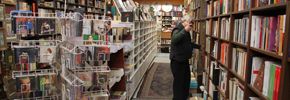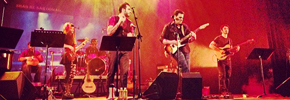Sima Sahar Zerehi – Growing up it was my favourite legend – the greatest archer in ancient Iran, Arash, is called upon to settle a territorial dispute between the kingdoms of Iran and Turan.
The warrior heavy with purpose climbs Mount Damavand. He knows where his arrow lands will determine the new border for his country; he knows that his prowess as an archer will establish the future of the kingdom of Iran; he knows that in this moment he is not just a man but the embodiment of the aspirations of an entire people. 
I would picture him majestic, strong, with steel like determination – sturdy powerful limbs extending like chiselled stone from the mountain channelling the strength of the rock bed and the force of the wind – taut muscles extended to their limits about to recoil. I would envision his courage battling like a lion to calm the fluttering wings of his nerves.
Arash captured my childhood imagination in a way that no female heroine could. While kids in the west played Robin Hood, Arash was my hero with a bow and arrow.
In my childish play I would climb on hills and imagine holding a bow and arrow in my small hands, I would extend my arms stretching them out and fancy myself as the champion intrusted with great purpose. It never crossed my mind that I was a girl and Arash was an imperialist.
There’s something about legends, they fuel the imagination, allow you to think the impossible, create identity and cast a net of connectivity on disparate peoples. Legends create a mythology about the kind of people that you are and what you aspire to be.
Behind every myth lurk a set of essential truths, the tension between national identity, cultural heritage and linguistic sovereignty are still very much alive for modern day Iran and its various peoples. No single arrow can create homogeny and destroy inequity. However, Arash in the Canadian context has been reinterpreted as a story about diversity.
The legend of Arash is the story most closely associated with the ancient Iranian festival of Tirgan, the namesake of the second bi-annual arts Festival at Toronto’s Harbourfront.
The modern Tirgan festival has reimagined the myth – adapted it for its new Canadian context. While Arash is predominantly a legend about empire, today it is reinterpreted as a story about diversity of cultures in Iran. This is how the new Arash is read in Canada: With his arrow which travelled from dawn until dusk Arash expanded the territory belonging to Iran and hence many new populations became part of the kingdom, weaving their arts, culture and traditions into our rich artistic tapestry.
The new legend is a sign of the renewed aspirations of Iranian-Canadians, the desire to reimagine our history as inclusive and our cultures as residing in harmony. The new Arash is a story about a community that has matured beyond rigid national hegemony; a community that acknowledges its diversity as a source of strength.
This is how festivals and celebrations can reinterpret and reinvent culture and tradition. This is how they can create identity and foster new community formations. Tirgan at Harbourfront will show a new generation of Iranian-Canadian kids a modern Arash – a champion of inclusivity.
The four-day Tirgan festival will take place from July 21 to July 24 and promises to showcase the arts, culture and diversity from within Iran. The festival will highlight the cultural productions of Iran and Iranian artists through music, dance, theatre, cinema, literature, and visual arts as well as the culinary arts.
Tirgan 2011 is slated to be the world’s largest Iranian festival outside of Iran and is expected to attract over 100,000 visitors. The festival boasts the involvement of over 100 artists and 200 volunteers who have come together to make the event a success.
While Tirgan also features some ticketed events, many of its performances are offered free of charge. In addition to live performances and events the festival also includes access to workshops, organized activities, and a traditional bazaar.
In the next two months, our series on Mapping Tehranto will focus on the Tirgan Festival. We will feature weekly articles about the volunteers, artists, community organizers, supporters and donors who made Tirgan possible and investigate how this festival aspires to be a permanent feature in Toronto’s Harbourfront, Join us weekly as we count down to July 21.





